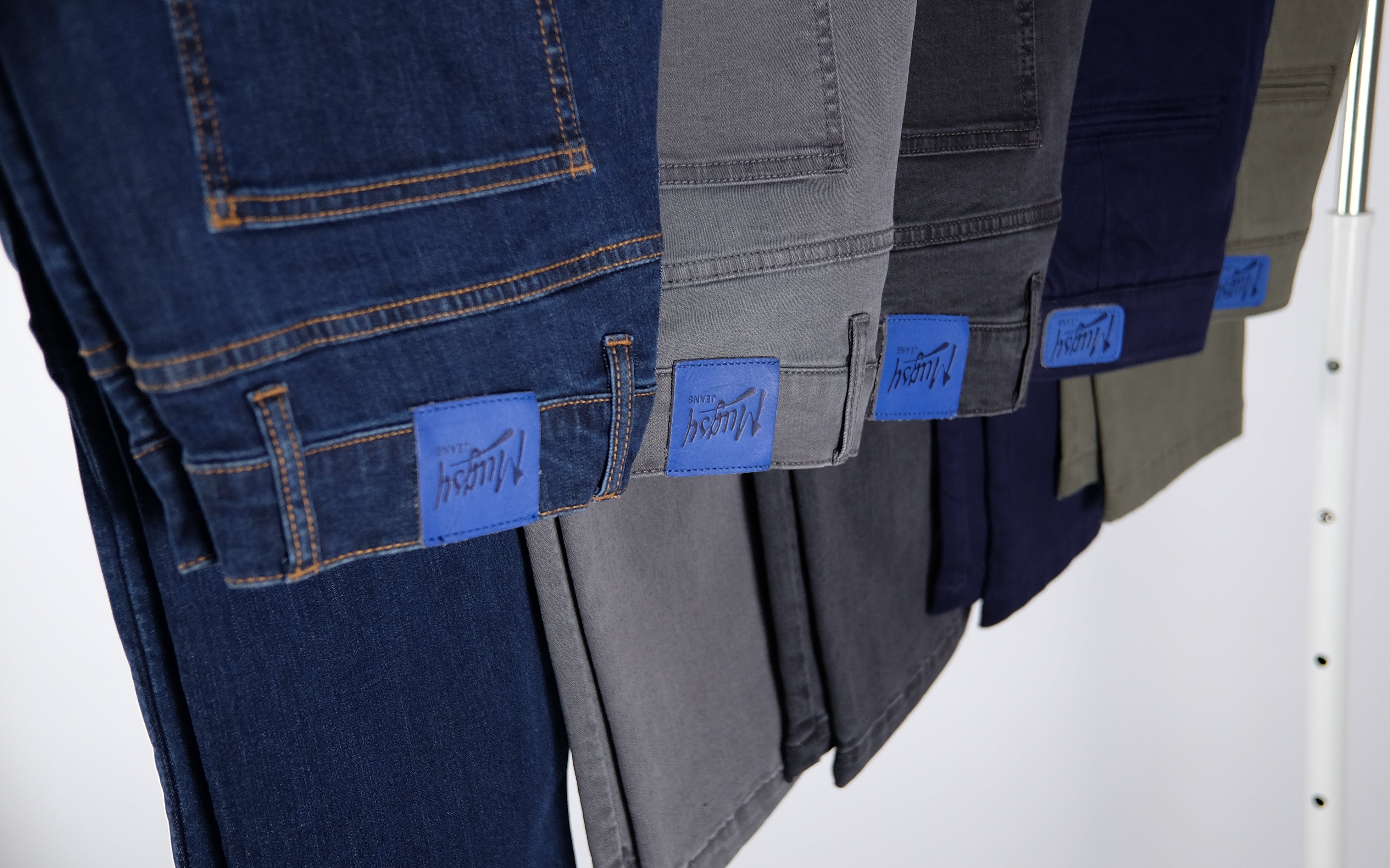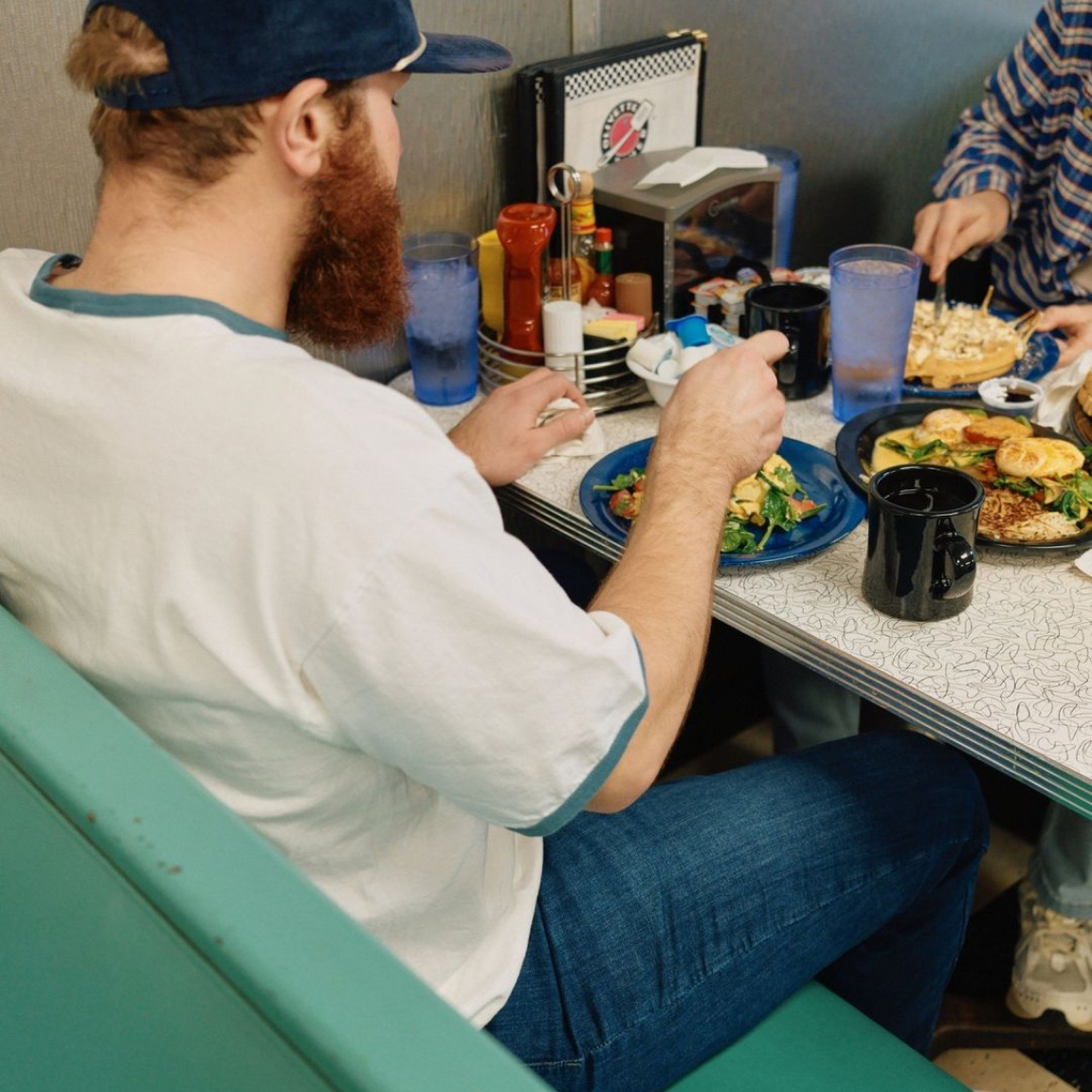It's crazy to think that in just about 150 years of existence, jeans have become the most important clothing piece in the world. And though we all rely on our jeans as the staple of our wardrobe, few of us know anything about how they're actually made. In this post, we walk you through the process on a high-level.
Note: there are an infinite number of variations to this process, we've boiled it down to the basics to keep your head from spinning.
STEP 1: DENIM
Denim is the fabric that jeans are made from. Think of it like this: denim is the fabric, jeans are the pants. Just like whiskey is the alcohol and old-fashioned is the drink.
Historically, denim was a 100% cotton fabric that is dyed blue (using indigo dye). The main differences between denim and your 100% cotton tee is:
- The weight—denim is much thicker
- The way its sewn—think of cotton tee fabric as a weave where vertical and horizontal threads cross over and under each other on a 1 x 1 ratio; denim on the other hand is woven together with the horizontal threads typically passing under 3 vertical threads (a 3 x 1 ratio).
- In denim, only the vertical threads are dyed blue while the horizontal threads are left undyed.
This is why when you analyze denim up close, you'll see it actually has a diagonal pattern (due to the 3x1 weaving ratio) and the outside is blue (where the vertical threads are exposed) while the inside is white (where the undyed horizontal threads are exposed). Also, as you wear your jeans the dye on the outside, exposed threads diminishes and slowly exposes more of the white threads underneath, causing them to fade.
Up until ~20 years ago, this is how almost all denim was made. Nowadays though, we're finding more and more technological advancements. That's why you'll notice most jeans have some sort of stretch (via spandex) blended into the mix and varying color options. Mugsy's, for instance, have a blend of cotton with several synthetic fibers to give them their epic flexibility and softness.
Overall, the above qualities make denim very durable, which is why it initially became popular in the worker/mining communities in the mid-1800s. From there it didn't take long for the stylistos to get their hands on jeans and turn them into a fashion staple.
STEP 2: CUT & SEW
A jeans factory receives the denim in rolls like this:
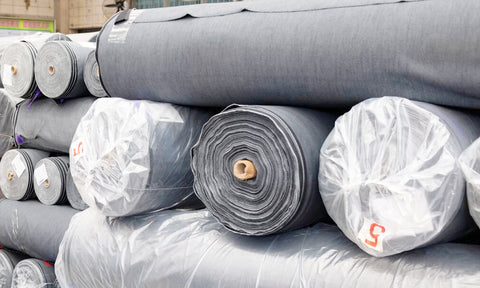
From there the factory unrolls the denim into long sheets, layering them on top of each other. A denim pattern is then placed on top. Think of the pattern as a stencil that marks all the pieces of the jeans that need to be cut out (e.g. the front and back portions of the legs, the waistband, the pockets, the belt loops, etc.). The size and shapes of these pieces determine the end fit of the jeans (obviously).

Once cut, the separate pieces are sewn together. From there, the trimmings are added on—pocket fabrics, buttons, rivets, zipper, leather patch, etc.
One cool thing to note here: rivets were originally introduced in jeans to make them more durable. So instead of just threading/stitching holding the pants together, these metal clasps were added in to make the pants even stronger. Useful in the mining pits, but nowadays they're pretty much just for looks; your denim fabric is more likely to give out before a stitching falls apart, which is why crotch tears and holes are much more common.
At this point, you have a "raw denim" jean. You've probably heard this term before. All it means is that jeans have not been washed by the factory, so raw denim is essentially unwashed denim. This is why raw denim jeans tend to be very dark, rigid, and without fading.
STEP 3: WHISKERING AND FADING
Our Fultons and Lake Shores have what's called whiskers on the front of the jeans to give them more of a natural and "worn in" look to them. The whiskering is a pattern that is marked on the jeans and then rubbed to give the faded look.
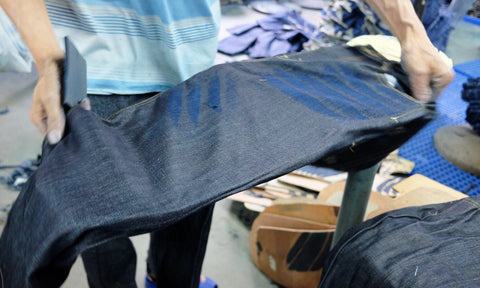
After that, fading is the next process. Most of our jeans have fading on the front and the back of the jeans. They use something similar to sand paper and rub up and down on the jeans until the jeans are faded enough to a desired shade.
STEP 4: WASHING
Since our jeans are not raw, they head over to the washing machines. Depending on how dark the jean is, will depend on how they get washed and for how long.
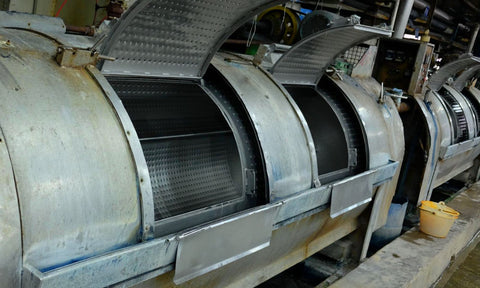
Most jeans will only need to get washed and then dried one time. However, there are jeans that will get stone-washed. This process involves the jeans getting put in the washing machines with a ton of pumice stones. Then after that first wash, the jeans will go for a second wash, this time without the stones.
There are many other ways to wash jeans such as using bleach and enzymes but we keep it simple with our jeans to give them a classic look.
STEP 5: FINAL TOUCHES
The best part of any denim process is adding the final touches. The rivets, the patches, etc. all get added right before they get packaged up and sent out to sell!
There ya have it! Start to finish of what happens from having just a roll of denim to a pair of awesome jeans!

